Alex Bennett
August 2018. I returned to Fukushima prefecture with a group of 22 international kendo practitioners from 10 countries. When I was here last, six months before, the landscape was covered in a shimmering white blanket of snow. This time, the mercury was pushing into the high-30s C. Myriad hues of green extended as far as the eye could see providing a heartening albeit sultry reprieve from the concrete jungle of Tokyo.
My iPhone intermittently spat out well-intentioned public service messages warning me to "avoid vigorous exercise due to the risk of heatstroke." This was not an option. We were here for musha-shugyo—that is, a training mission to advance another step on the path of the sword just like itinerant samurai swordsmen centuries before. Vigorous exercise clashing swords in the cauldron of local Fukushima dojos was the whole point of our being there.
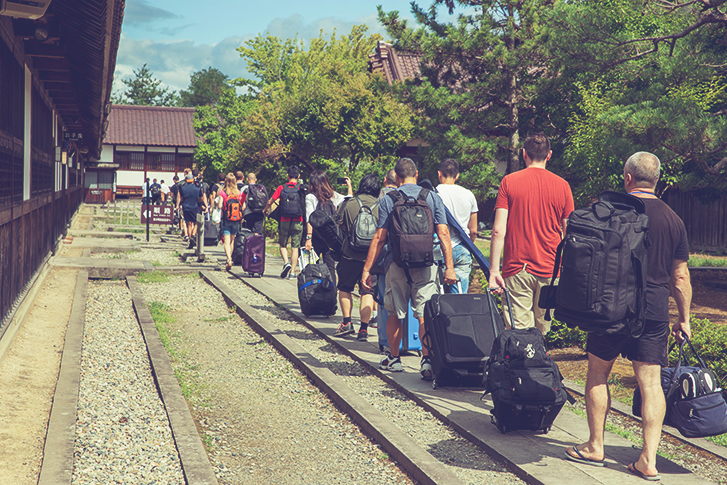
Our band of intrepid kenshi rendezvoused at Shin-Shirakawa Station and boarded a bus bound for the small village of Ouchi-juku. Hundreds of years ago, this quaint little hamlet nestled in the mountains of Fukushima functioned as the first service stop for the feudal lord of Aizu domain and his many attendants on their regular ten-day hikes to pay homage to the Shogun in the capital of Edo. After the Boshin War (1868) and the great social upheaval of the Meiji period in which class distinctions were dismantled, Ouchi-juku soon became a forgotten outpost on a track rarely trodden.
The flurry of modernization completely passed it by. Over the last 150 years, Ouchi-juku inadvertently became a living relic of Japan's samurai past. It wasn't until the 1980s that the thatched-roof houses and traditional architecture was suddenly thrust into the limelight as a valuable window on bygone times. Ouchi-juku was designated as "tangible cultural heritage" to be preserved for posterity. What better place than a 400-year-old buckwheat noodle shop to reflect on the purpose of our kendo pilgrimage to Fukushima and get our minds in the right space for the adventure that awaited.
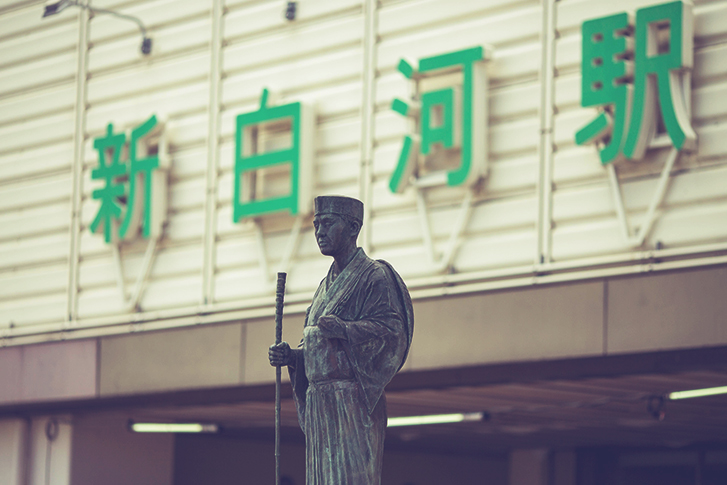
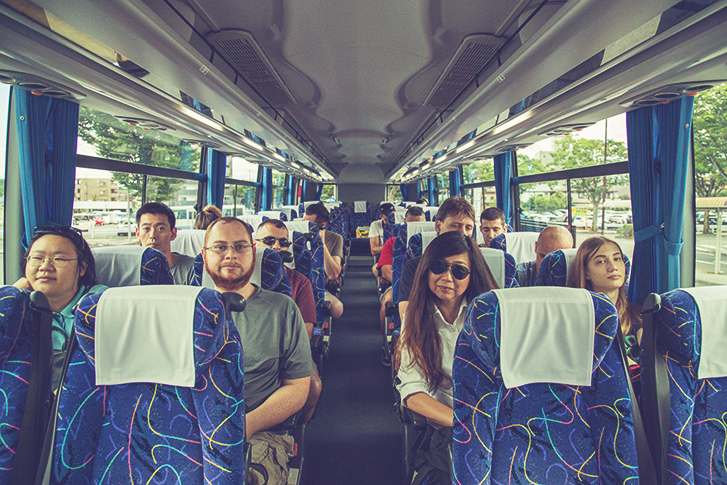
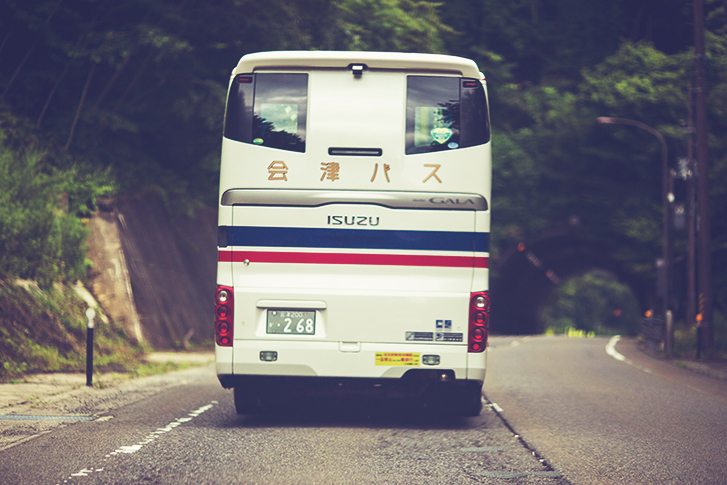
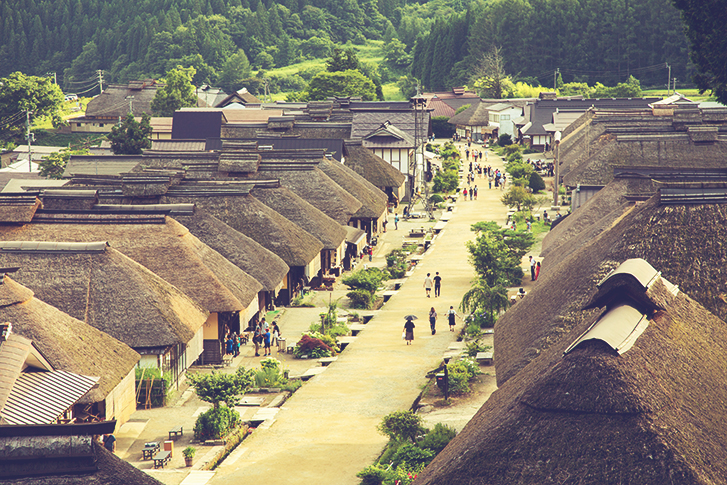
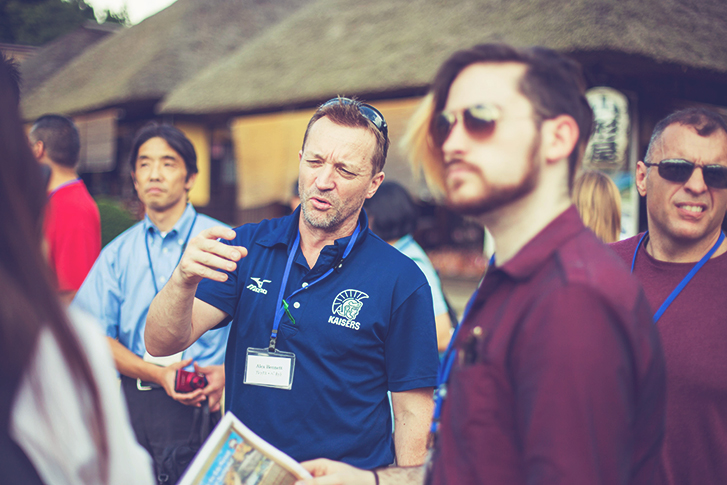
We headed to the city of Aizu-Wakamatsu for our first training session. The Aizu-Wakamatsu Butokuden is a beautiful dojo built 1934 in front of the iconic Tsurugajo Castle. It was constructed as a part of the Greater-Japan Society of Martial Virtue's (Dai-Nippon Butokukai) national network of dojos. Established in 1895, the DNB served as the gatekeeper for Japanese martial arts until the end of the Second World War.
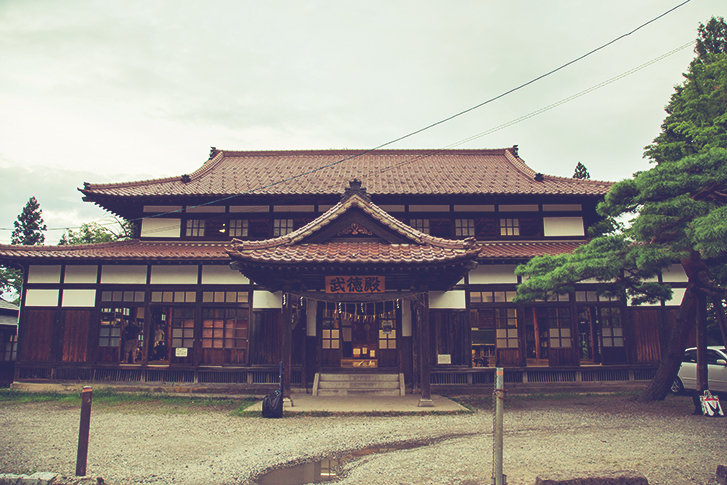
I trained at the Butokuden during my last visit to Fukushima. I remember wading through waist-deep snow to the entrance where I could see white puffs of dragon breath dissipating into the ether as kenshi engaged in heated combat inside the frigid hall. How I longed for those chilly conditions now as we changed into our training gear drenched in a perpetual pool of sweat.
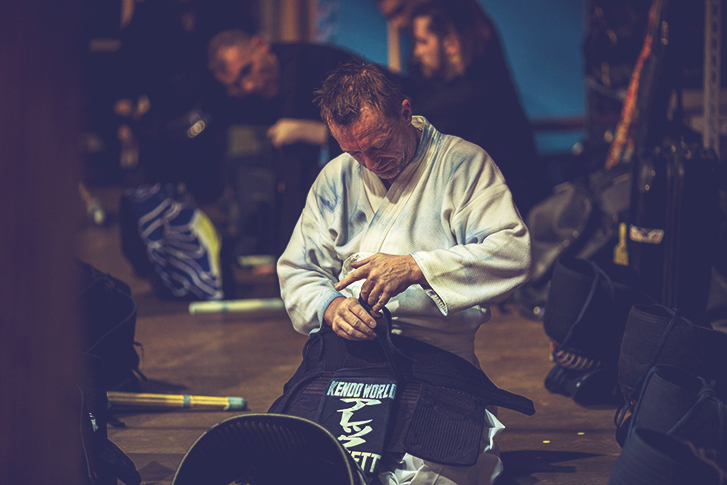
The kendo club that uses the Butokuden is named after the famous unit of local samurai youth, the Byakkotai, whose last act of defiance in the violent days leading up to the Meiji Restoration are hallowed in local lore. Among the plucky kendo kids donning the Byakko nametags on the front of their kendo armour was one whose surname was written in katakana, a component of the Japanese writing system used for transcribing foreign words. His nametag must surely attract more than a few rubberneckers as children with foreign connections are not that common in dojos in Japan. Now, probably for the first time in his life, he was given a glimpse of how truly international kendo was. Everybody sported a katakana nametag in our group, and we were mixing it with the best of them. Facing off with bamboo swords in hand, race, colour or creed is of little consequence in this most quintessential of traditional Japanese arts. Mouth agape, his iridescent eyes shone brightly from behind the metal grill of his head protector (men).
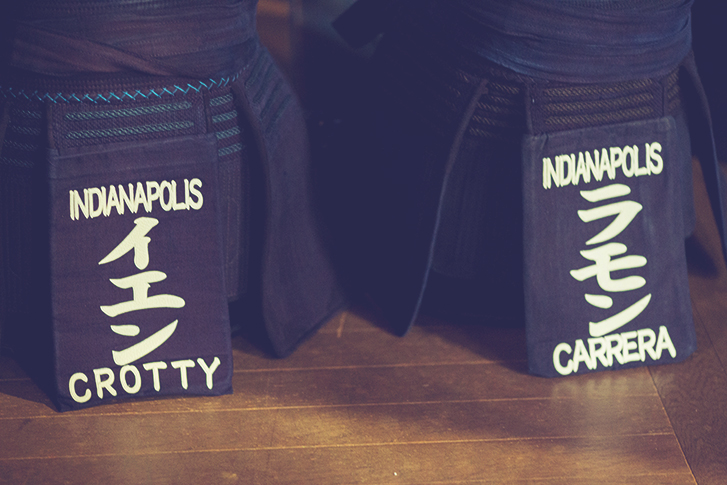
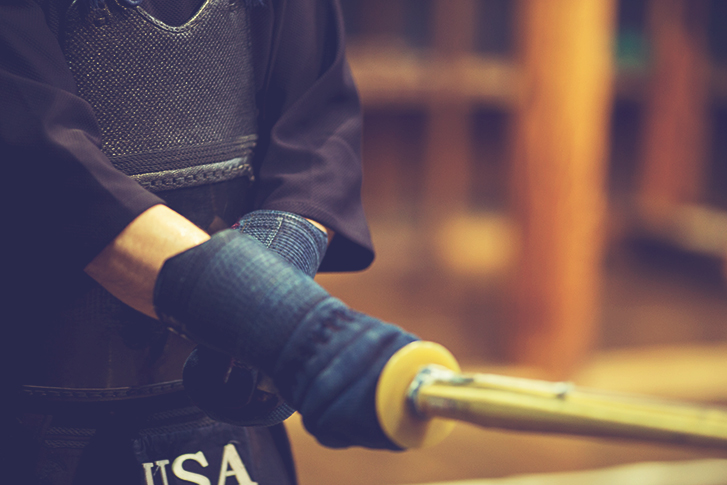
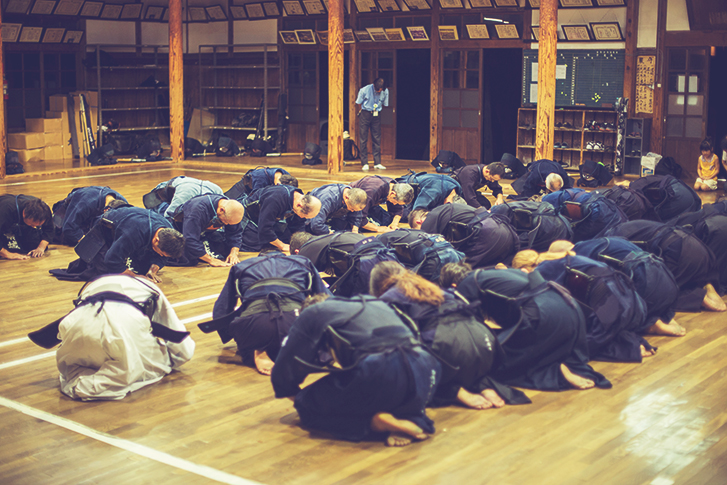
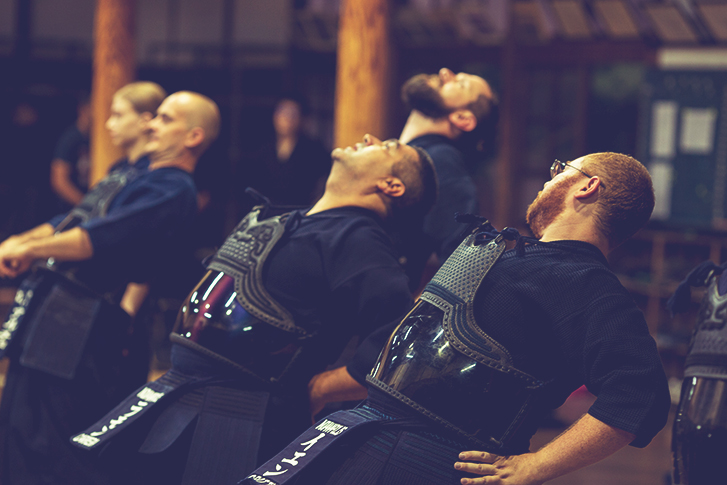
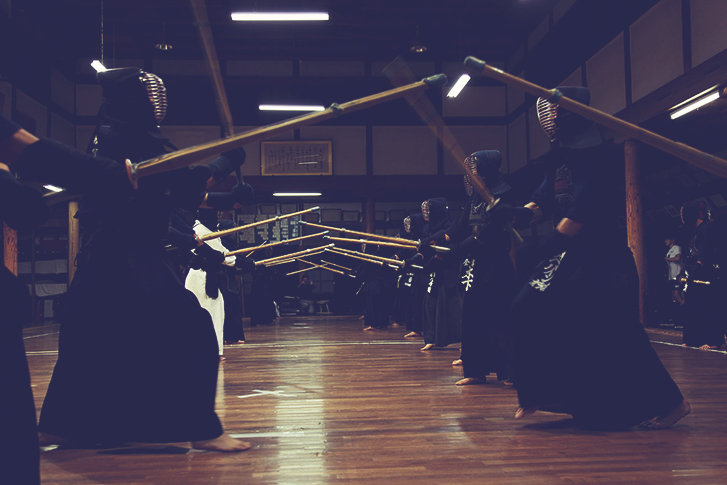
Typically conducted in modern gymnasiums overseas, many in our group had never experienced kendo training in an authentic dojo before. The Butokuden was a rare treat in this respect. So was the Nisshinkan, our destination the following day. The original Nisshinkan, the Aizu domain school for educating samurai boys in military and civil arts, was built in 1803. It was lauded at the time as the highest level of learning in the land. Many talented graduates nurtured at the Nisshinkan were destined to become leading political and cultural figures in modern Japan. Nisshinkan was also the school where the Byakkotai boys studied.
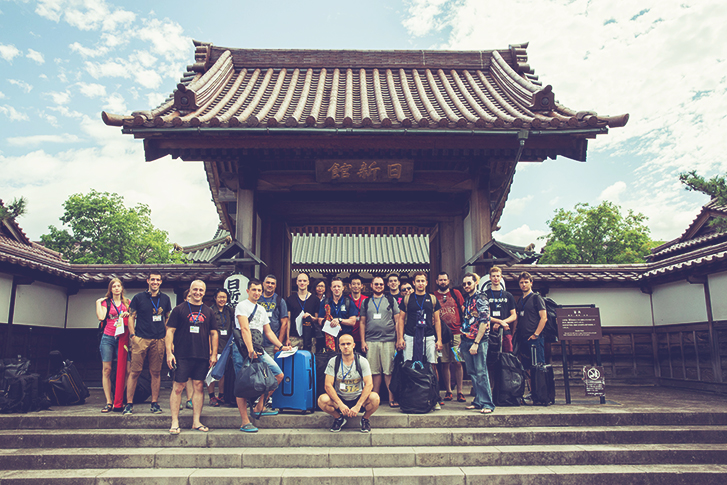
The original buildings were located in front of Tsurugajo Castle, but met with a fiery end in the Boshin War. Through some odd quirk of fate, a kendo equipment store now stands on that very site, just a stone’s throw away from the Butokuden. The Nisshinkan was reconstructed in every detail in 1987, about a 20-minute car ride from where it initially stood.
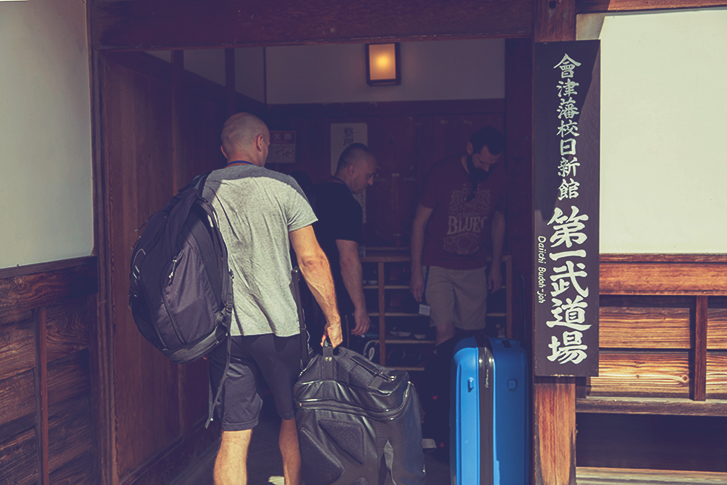
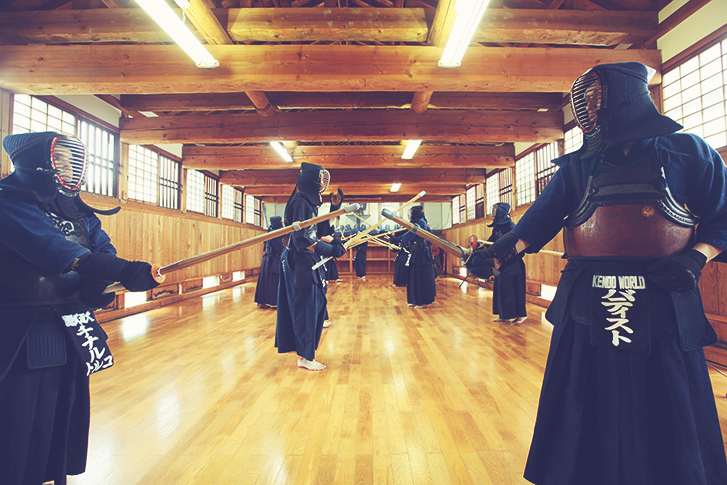
We started the morning with a training session in the Nisshinkan dojo. Sweating profusely after an energetic workout, we took reprieve from the blistering sun in one of the classrooms for a demonstration of the sophisticated but arduous art of sword polishing. Tsukamoto-sensei was generous with his time and freely shared his knowledge in this most obscure of crafts. Body posture, quality and granularity of the stone, resonance of the blade brushing over its surface, tempo and angle of the continual sliding motion… So many subtle factors consume the polisher's mind for 8-hours a day as he painstakingly transforms the dull grey surface of the sword to a mirror-like sheen that katana are famous for.
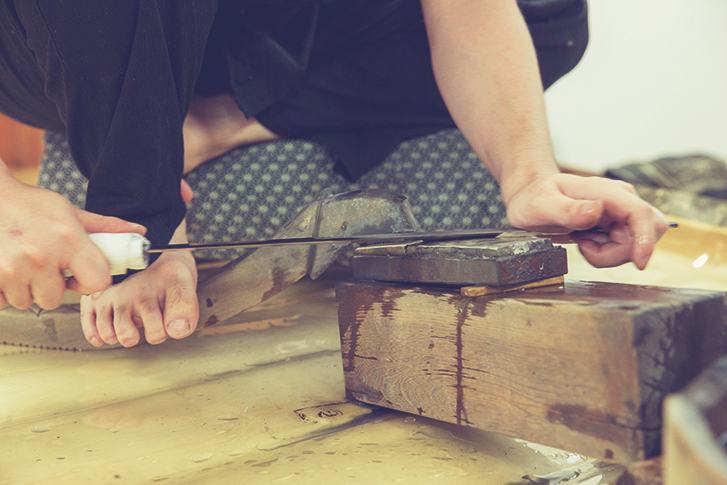
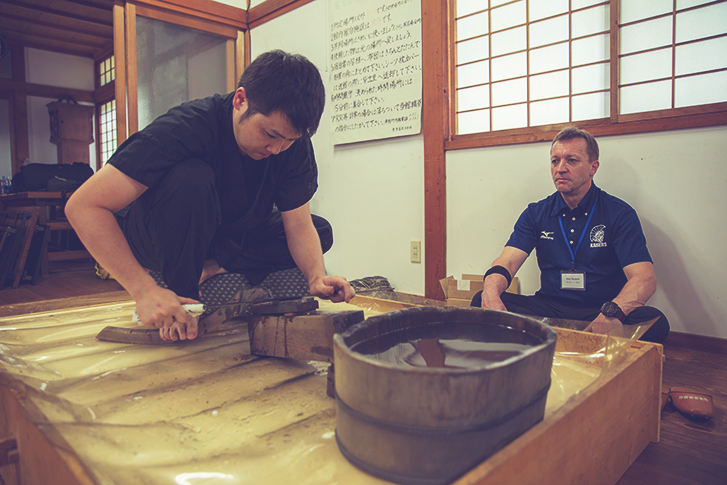
Some in our group were even allowed to try. "Six months of hard practice every single day, and you might just acquire the basics to start calling yourself an apprentice polisher…" he said cheerfully to a chap from the Netherlands. The other challengers were not rewarded with such glowing praise…
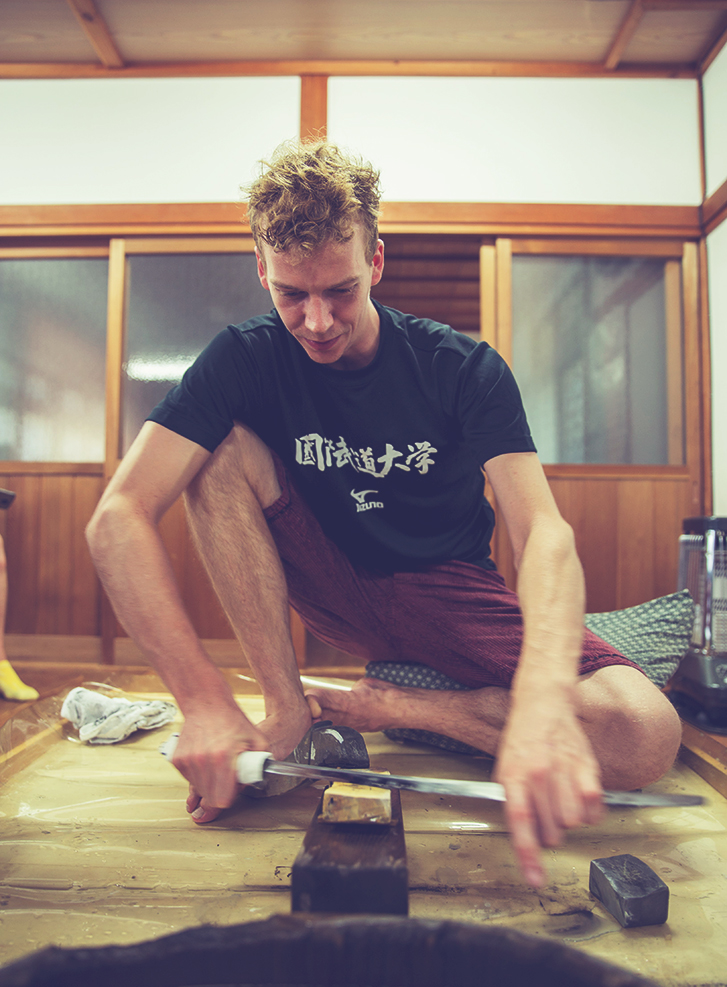
In the same classroom I delivered a short lecture on the history of the region and the substance of Aizu's celebrated samurai spirit. It is one thing to visit the many historical locations there, but they take on a completely different meaning when you know the back story. The life-sized wax dolls of samurai boys studying various academic subjects in the classrooms, or arm-wrestling like lads everywhere do, helped facilitate an uncanny personal connection to the Nisshinkan's young adherents of bushido.
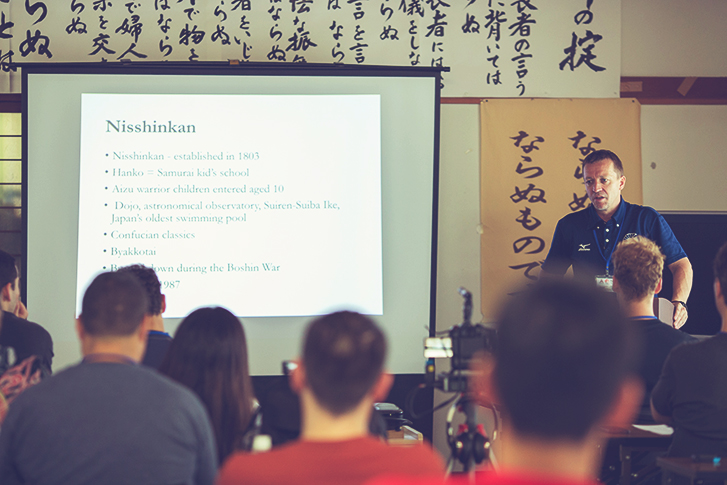
This made our visit to their graves on Mount Iimoriyama, the place where twenty of them committed seppuku as a last act of defiance in the Boshin War, so much more poignant. From inside the tower of the gorgeous Tsurugajo Castle we could get a sense of the scale of the fateful battle of 1868. This was the castle the Byakkotai erroneously thought was going up in flames from their viewpoint on Mount Iiimoriyama, prompting them to cut open their bellies in despair. If only they had smartphones like the youth of today. They would have known then that all hope was not lost.
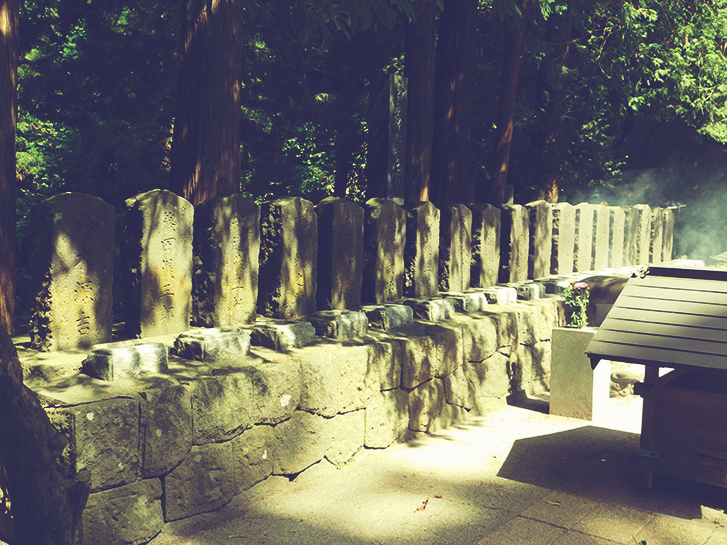
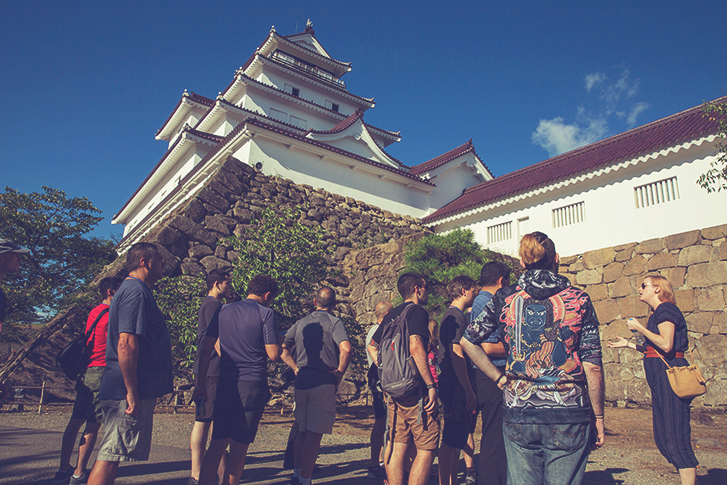
It is impossible to really comprehend the enormity of their sacrifice, driven as it was by the Aizu domain's famous bushido motif "that which must not be shall not be". Nevertheless, we were all affected by their tragic heroism. It even felt as though the Byakkotai boys were still there somewhere. Perhaps for the last century-and-a-half, somewhat embarrassed, they continue to watch the flow of people climbing the sacred hill to pay them respect as paragons of loyalty and duty. After all, they only did "what was right" according to the tenets of bushido that they had been taught from the cradle.
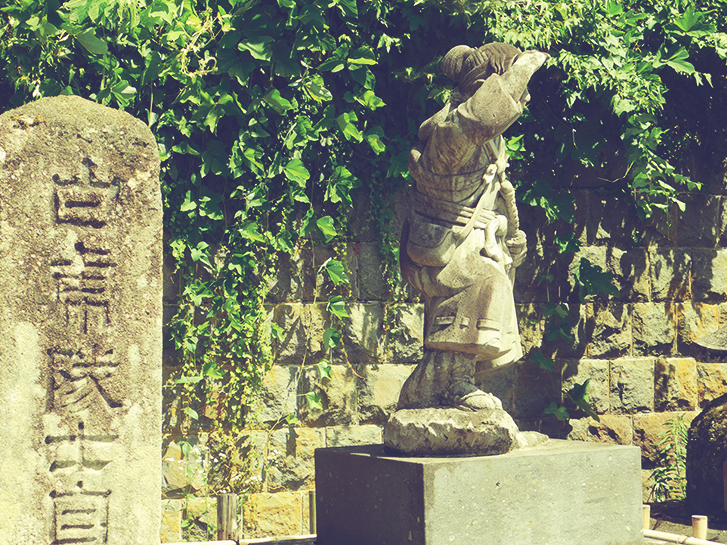
A night at a quintessential onsen resort that Fukushima is renowned for provided a chance to reflect on the things we had seen in the day. There is nothing better than having sore muscles soothed and lingering tinges of melancholy dissipate in natural hot spring water.
Refreshed and invigorated, the last day of our Fukushima adventure got underway with a visit to Kasumigajo Castle in Nihonmatsu. This was also the site of a famous Boshin War confrontation between samurai of the Niwa clan and the imperial loyalists. Although not as well-known as the Byakkotai of Aizu Wakamatsu, a group of Nihonmatsu samurai boys known as the Shonentai also left their names forever in the region's folklore. They too made the ultimate sacrifice, fighting to the death against seasoned and fierce warriors as the last line of defence for their castle and families.
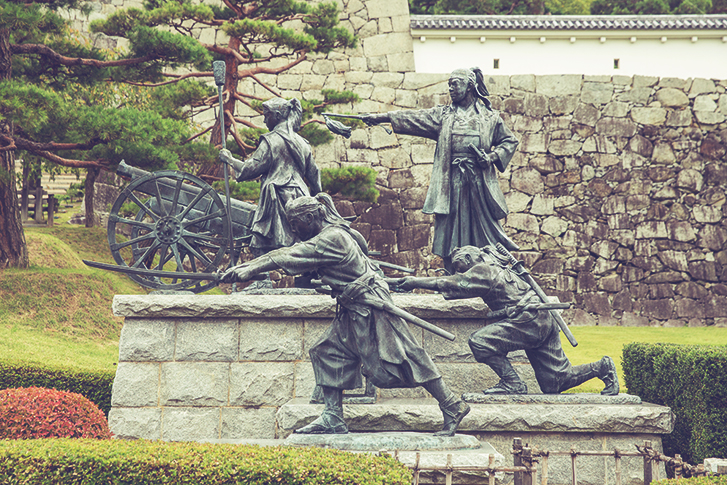
The Kasumigajo Castle was destroyed in the Boshin War. Only the foundations and some of the sturdy stone walls remain. A spritely old gentleman, Sato-san, escorted us through the ruins with vim and vigour. It was a struggle to keep up as he deftly scaled the old stairways and took us over the strategic hill that was once the Nihonmatsu stronghold.
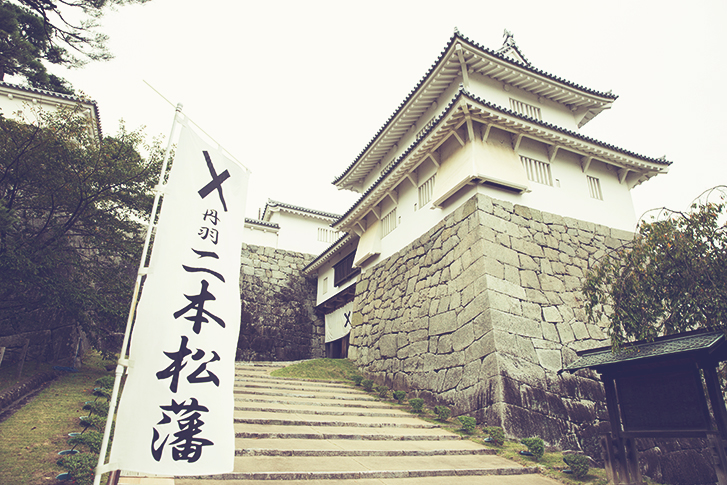
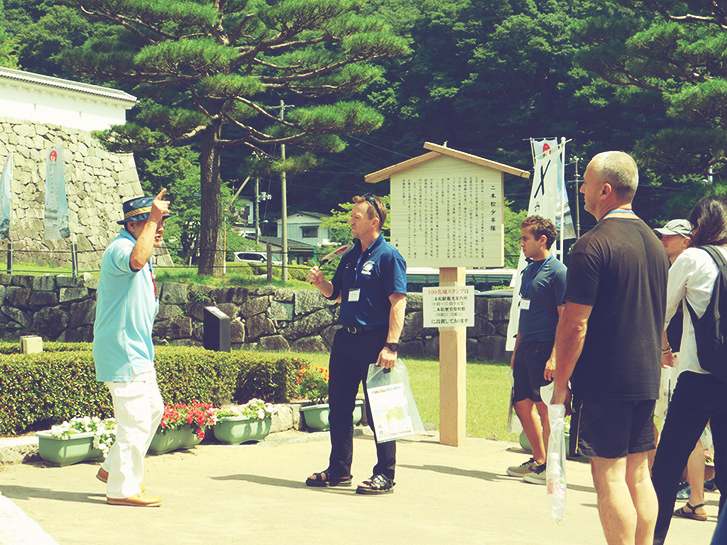
Upon learning that Sato-san was 70-years old, our group of "hardened" kendo enthusiasts had no choice but to suck in gulps of fresh mountain air and try to look undaunted by the tough pace set by our guide. "The view is magnificent, isn't it?" He said. "But you should see it in the spring time. The mountains turn a dazzling pink when all the cheery trees in bloom. Make sure you come back and check that out, and the famous chrysanthemum displays in November, too!"
Sato-san then took us to Dairinji, a Zen temple where the Shonentai boys are enshrined. The temple bell chiming in the background created a fitting ambiance as we inspected the row of grave stones and monuments arranged in the mossy glade.
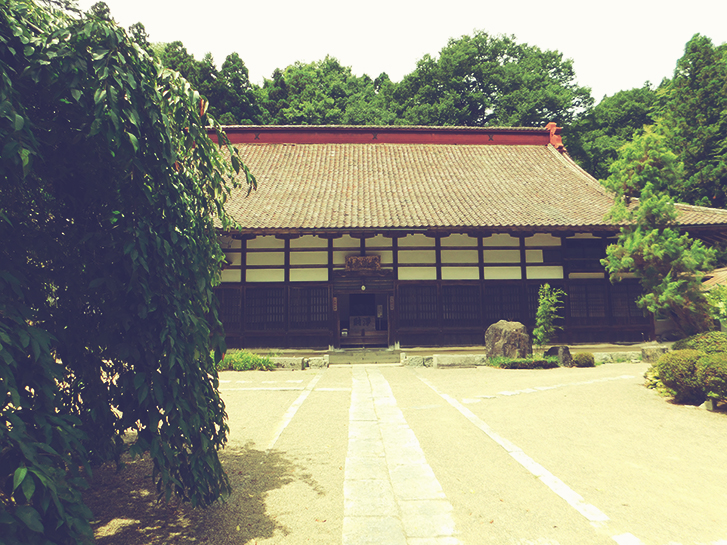
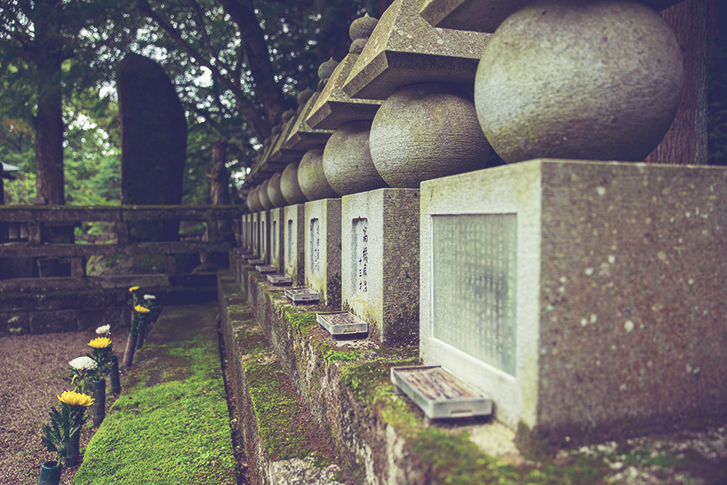
Our final stop was the 90-year-old Nihonmatsu dojo. The nametags of the local kenshi revealed some familiar surnames. Clearly, many of them were related to the same families as the Shonentai. Sensei welcomed us before training started and told us about the dojo, and the giant pots positioned strategically under the floorboards in the traditional way to make it resonate like a drum with each attacking stomp.
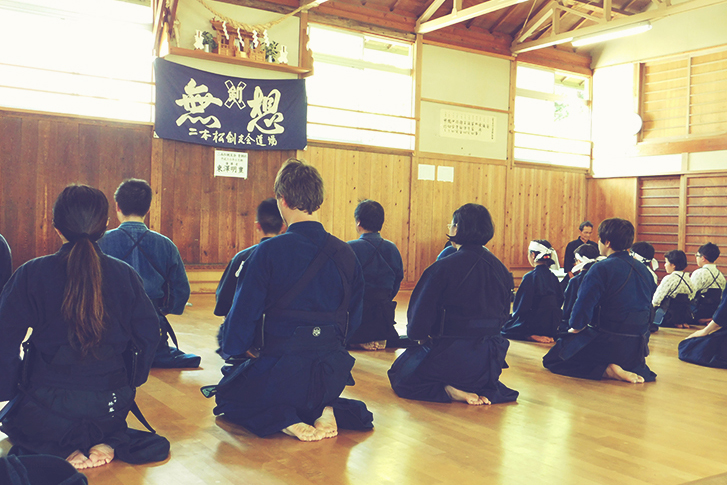
He told us he has trained at the dojo for 60 years. In all that time, not one person had ever been injured there. "The reason why", he informed us, "is because the Shonentai boys watch over us from the small shrine at the front of the dojo. They are our guardian angels."
The ensuing training was predictably hot, and just as exhilarating. The locals seemed to enjoy the sudden and unprecedented influx of foreign kenshi in their midst. The kids were particularly excited as they finally had a chance to try out a few English phrases they learned at school. 0000-sensei wrapped up the session with a speech about the significance of our visit to the members of his dojo. He referred to the kendo teaching "koken-chiai" (to know love through crossing swords).
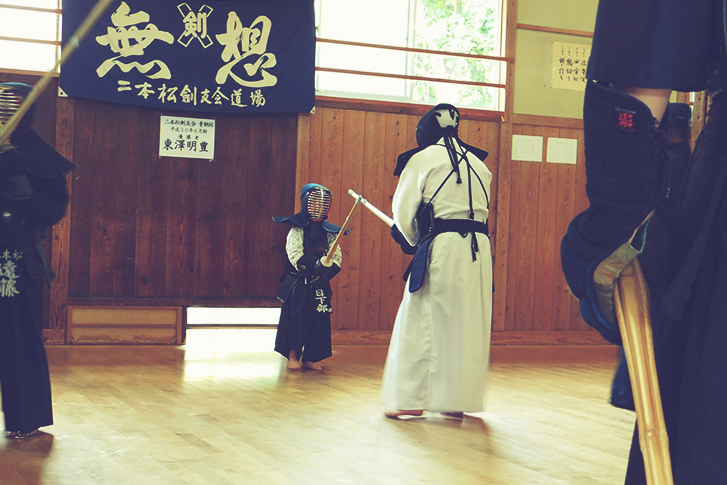
This concept is the philosophical underpinning kendo. It's basically about learning respect and empathy through the study of martial arts. Even in competitive matches, etiquette is stressed as an expression of mutual respect, an ideal that is sometimes overlooked in the competitive arena. There is an understanding that all kenshi, irrespective of skill, shed the same blood, sweat, and tears during arduous training. Physical and mental barriers are smashed as the practitioner develops skill, resilience, and confidence in his or her ability. This experience encourages practitioners to develop a modest attitude to life and broaden their horizons through an appreciation of the cooperation of other people needed to advance. It is to train hard, learn and earn respect, enjoy and be grateful for what we have.
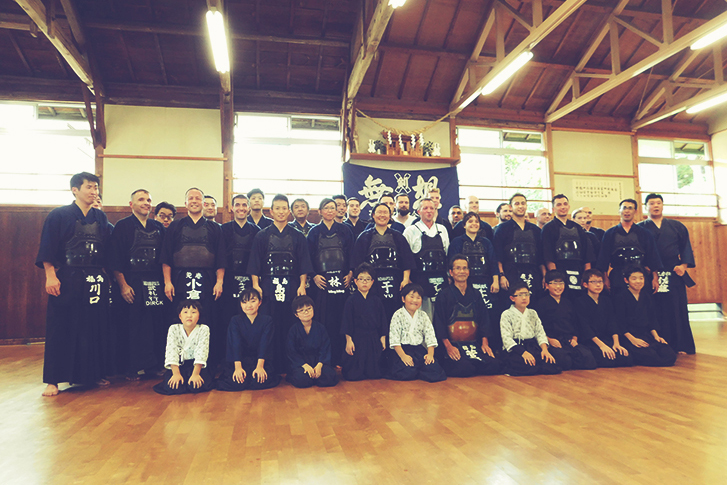
With this important message in mind, we concluded our samurai spirit journey in Fukushima back at Shin-Shirakawa Station. Everybody gained insights into aspects of Japan and its history that cannot be truly appreciated unless experienced in the flesh. Sometimes the heart sees what is invisible to the eye. Samurai'ing in Fukushima reminded me of a quote by the ancient Roman military leader, scholar, and emperor, Marcus Aurelius. "When you arise in the morning, think of what a precious privilege it is to be alive - to breathe, to think, to enjoy, to love."







